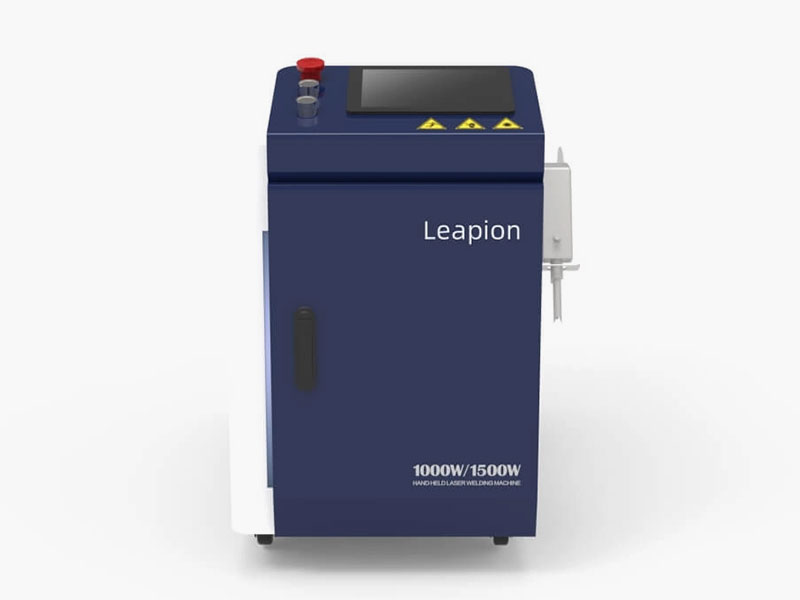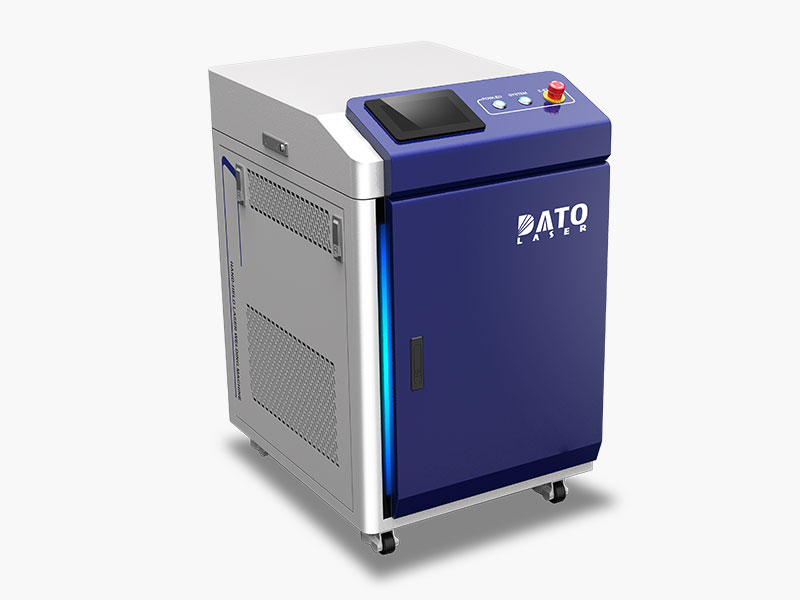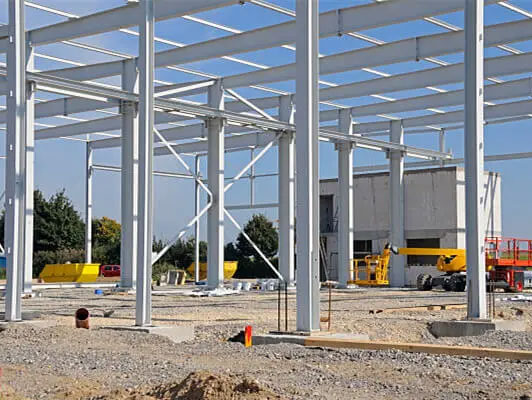Understanding Laser Power: Peak Power vs. Average Power in Laser Welding Machines

When delving into the world of laser welding, understanding the nuances of laser power is crucial for optimizing welding performance and achieving desired results. At Dato and Leapion, we are committed to providing our customers with not only the best laser welding machines but also the knowledge to use them effectively. One of the key concepts to grasp is the difference between peak power and average power, two fundamental parameters that significantly impact the welding process. This article will explore these concepts in detail, explaining their differences, their effects on welding, and how they relate to different types of laser welding machines.
The Fundamentals of Laser Power
Before we dive into the specifics of peak and average power, let's establish a basic understanding of laser power in general. Laser power refers to the rate at which energy is delivered by the laser beam. It is typically measured in watts (W) and directly influences the amount of heat generated at the welding point. The higher the laser power, the more heat is delivered, and the faster the material can be melted and fused. However, the way this power is delivered can vary significantly, leading to the concepts of peak and average power.
Peak Power: The Intensity of the Pulse
Peak power refers to the maximum power output of a laser during a pulse. It is the instantaneous power level reached during the active phase of a pulsed laser. In a pulsed laser, the laser beam is not continuously emitted but rather delivered in short bursts or pulses. The peak power represents the highest power level achieved within each of these pulses.
Imagine a sprinter running a race. The peak power is analogous to the sprinter's top speed during the sprint. It's a measure of the maximum intensity they can achieve, even if it's only for a brief moment. Similarly, the peak power of a laser is the maximum power it can deliver in a very short time, during the active phase of the pulse.
How does peak power affect the welding process? The peak power of a laser pulse directly influences the material's initial melting and vaporization. A higher peak power can lead to faster material melting and deeper penetration, making it suitable for certain welding applications, such as deep penetration welding or welding of highly reflective materials. The high intensity of the pulse can also create a more localized heat-affected zone (HAZ), minimizing distortion in some cases.
Average Power: The Overall Energy Output
Average power, on the other hand, refers to the average power output of a laser over a period of time. It is calculated by considering the peak power, the pulse duration, and the pulse repetition rate (the number of pulses per second). The average power represents the overall energy delivered by the laser over time.
Using the sprinter analogy again, the average power is like the sprinter's average speed during the entire race, taking into account both the sprinting and recovery phases. It's a measure of the overall energy output over a longer period. Similarly, the average power of a laser is the overall energy it delivers over time, considering both the active pulse and the inactive periods between pulses.
How is average power calculated? The average power is calculated by multiplying the peak power by the duty cycle. The duty cycle is the ratio of the pulse duration to the total pulse period (the time between the start of one pulse and the start of the next). For example, if a laser has a peak power of 10kW and a duty cycle of 10%, the average power would be 1kW.
Pulsed Lasers vs. Continuous Wave Lasers: The Key Difference
The concepts of peak power and average power are particularly relevant when comparing pulsed lasers and continuous wave (CW) lasers.
Pulsed Lasers: As mentioned earlier, pulsed lasers emit laser energy in short bursts or pulses. They are characterized by high peak power and a lower average power compared to continuous wave lasers. Pulsed lasers are often used for applications where precise control over heat input is crucial, such as welding thin materials or heat-sensitive components. The high peak power allows for rapid melting, while the lower average power minimizes heat buildup.
Continuous Wave (CW) Lasers: Continuous wave lasers, in contrast, emit a continuous laser beam with a constant power output. In a CW laser, the peak power and average power are essentially the same. CW lasers are typically used for applications requiring high welding speeds and deeper penetration, such as welding thick materials or long seams.
What are the advantages of using a continuous wave laser welder? CW laser welders offer several advantages, including higher welding speeds, deeper penetration, and more consistent heat input. They are also generally more efficient for high-volume production.

The Interplay of Peak and Average Power in Laser Welding
The choice between a pulsed laser and a continuous wave laser, and the selection of specific peak and average power parameters, depends on the specific welding application and the material being welded.
High Peak Power, Low Average Power: This combination is often used for welding thin materials or materials with high reflectivity. The high peak power allows for rapid melting, while the low average power minimizes heat input and distortion. This is particularly useful for applications where precise control over the heat-affected zone is critical.
Low Peak Power, High Average Power: This combination is more suitable for welding thicker materials or for applications requiring deep penetration. The higher average power ensures that enough heat is delivered to melt the material effectively, while the lower peak power reduces the risk of material vaporization.
Continuous Wave Lasers: CW lasers are ideal for applications requiring consistent heat input and high welding speeds. They are particularly effective for welding long seams and thick materials.
How Peak Power Affects the Welding Process
The peak power of a laser pulse significantly influences the initial stages of the welding process. A higher peak power can lead to:
Faster Melting: The intense energy of the pulse can rapidly melt the material, reducing the time required for welding.
Deeper Penetration: The higher intensity can result in deeper penetration of the laser beam into the material, allowing for stronger and more robust welds.
Reduced Heat-Affected Zone (HAZ): In some cases, the rapid melting and short pulse duration can lead to a smaller HAZ, minimizing distortion and material degradation.
Improved Welding of Reflective Materials: High peak power can overcome the reflectivity of certain materials, making them easier to weld.
How Average Power Affects the Welding Process
The average power of a laser, on the other hand, influences the overall energy delivered to the workpiece and the overall welding process. A higher average power can lead to:
Higher Welding Speeds: The increased energy delivery allows for faster welding speeds, improving productivity.
Deeper Penetration: While peak power influences the initial penetration, average power ensures that enough energy is delivered to maintain the molten pool and achieve deep penetration.
More Consistent Heat Input: A higher average power provides a more consistent heat input, leading to more uniform and reliable welds.
Improved Fusion: The higher energy input ensures that the materials are properly fused, resulting in stronger and more durable welds.
Dato and Leapion: Your Partner in Laser Welding Technology
At Dato and Leapion, we offer a wide range of laser welding machines, including both pulsed and continuous wave lasers, to meet the diverse needs of our customers. Our team of experts can help you select the right machine and parameters for your specific application, ensuring optimal welding performance and results.
Our Expertise:
With over 16 years of experience in the laser industry, we have the expertise to guide you towards the perfect laser welding solution for your application.
Our Commitment to Quality:
We adhere to strict quality standards throughout the manufacturing process, ensuring that our machines are reliable and perform to the highest standards.
Our Global Reach:
We participate in over 80 exhibitions annually, showcasing our innovative laser solutions to customers around the world.

Conclusion: Mastering Laser Power for Optimal Welding
Understanding the difference between peak power and average power is essential for maximizing the performance of a laser welding machine. By carefully selecting the appropriate laser type and parameters, you can achieve precise, efficient, and high-quality welds. At Dato and Leapion, we are committed to providing you with the knowledge and technology you need to succeed in the world of laser welding. If you have any questions or would like to explore our range of laser welding solutions, please do not hesitate to contact us. We are here to help you achieve your welding goals.
Related Blogs
-
 Exploring the Safety, Precision, and Industrial Benefits of Laser Surface CleaningIn today’s fast-paced industrial world, where quality, efficiency, and sustainability are top priorities, manufacturers are constantly seeking better ways to clean metal surfaces without compromising material integrityBlog
Exploring the Safety, Precision, and Industrial Benefits of Laser Surface CleaningIn today’s fast-paced industrial world, where quality, efficiency, and sustainability are top priorities, manufacturers are constantly seeking better ways to clean metal surfaces without compromising material integrityBlog -
 A Complete Guide by DATO and LeapionIn modern industry, surface preparation and maintenance play a crucial role in achieving high-quality manufacturing results. Laser cleaning machines have emerged as one of the most innovative, efficient, and environmentally friendly tools for removing contaminantsBlog
A Complete Guide by DATO and LeapionIn modern industry, surface preparation and maintenance play a crucial role in achieving high-quality manufacturing results. Laser cleaning machines have emerged as one of the most innovative, efficient, and environmentally friendly tools for removing contaminantsBlog -
 Laser cleaning machines are revolutionizing industrial surface cleaning by offering a faster, safer, and more eco-friendly alternative to traditional methods. Whether removing rust, paint, oil, oxide, or other surface contaminants, laser cleaning has become a cutting-edge solution in manufacturing,Blog
Laser cleaning machines are revolutionizing industrial surface cleaning by offering a faster, safer, and more eco-friendly alternative to traditional methods. Whether removing rust, paint, oil, oxide, or other surface contaminants, laser cleaning has become a cutting-edge solution in manufacturing,Blog -
 Introduction: Transforming EV Battery Manufacturing Through Laser TechnologyThe electric vehicle revolution has accelerated dramatically over the past decade, bringing with it unprecedented challenges and opportunities in battery manufacturing. As global automakers commit billions to electrificationBlog
Introduction: Transforming EV Battery Manufacturing Through Laser TechnologyThe electric vehicle revolution has accelerated dramatically over the past decade, bringing with it unprecedented challenges and opportunities in battery manufacturing. As global automakers commit billions to electrificationBlog













